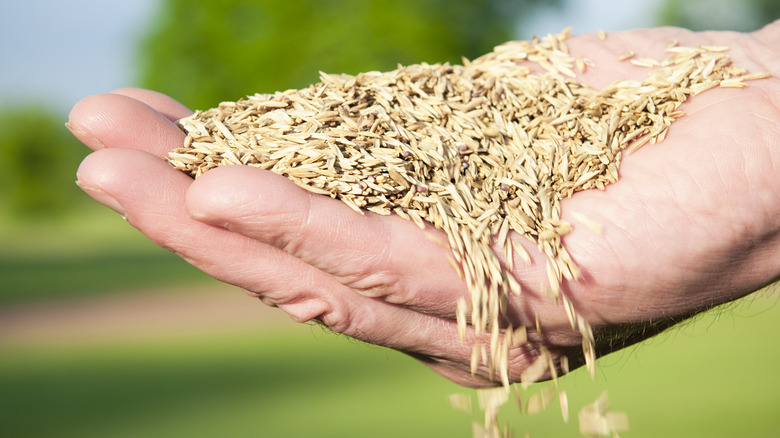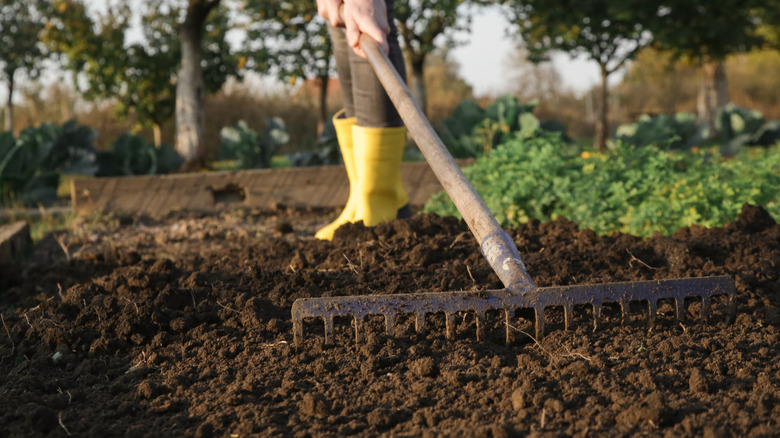Why You Should Consider Using Shade-Tolerant Carpetgrass In Your Yard
Turfgrasses provide a welcome respite from the hackneyed monotony of the urban landscape. They're also prized for keeping heat and pollution at bay. But what do you do if your shady backyard doesn't accommodate most grass types? Plant carpetgrass (Axonopus)! This hardy West Indies native is fairly shade-tolerant, forming a green carpet when planted underneath massive trees like oaks. Its use as a cover crop in full-canopied, highly shaded coconut and coffee orchards showcases its shade forbearance. While this doesn't imply they won't perform in full sun—they would, being warm-season grasses—they're perfect in southern gardens that should be experiencing sun but don't. Another advantage? They draw in lilting songbirds.
Axonopus has two main varieties: narrowleaf carpetgrass (Axonopus fissifolius) and broadleaf carpetgrass (Axonopus compressus). While differentiating the two isn't a breeze due to many hybrid cultivars, narrowleaf grasses usually exhibit slender (no-brainer) 1/16 to ¼-inch-wide leaves. Although this doesn't dim their shade tolerance, they fall short of their broader brethren, showcasing ⅙ to ⅜-inch-wide foliage. Unfortunately, broadleaf grasses also set more stolons—runners responsible for spreading—making them weedy.
Carpetgrass thrives in most soils
Admittedly, the "petit gazon"—as called by Louisiana's Creoles—isn't a gardener's favorite. Unlike the emerald green of most warm-season grasses, its blades sparkle with a bronze, pale green hue. Plus, it has distinct, coarse, hairy leaves with dull, rounded tips. When left uncut, you may notice long seed stalks ending in two lateral branches. Yet, carpetgrass makes up for its subpar looks by thriving in areas where other grasses, like bermudagrass, won't. Wet soils? Check. Low fertility? No problem. Poor drainage? It can work with that, too. It even survives in dry soils if watered intermittently. However, carpetgrasses prefer slightly acidic (pH between 5 and 6) soils and may outcompete companion plants in infertile soils.
Carpetgrasses form dense mats, effectively conserving soil. Plant them on slopes, and your leaching troubles will go poof. Grow them in gardens, and you won't be bothered by weeds or thatch. Another advantage is that they aren't heavy feeders. If you leave the turf alone, there's no need for fertilization. But even if you mow it frequently to avoid overgrown, unsightly seed stalks, you merely need one ounce of nitrogen for every 1000-square-foot area in early fall and late spring. Although it's prone to leaf spot and brownpatch disease, it heals independently, discounting the need for fungicides.
Growing carpetgrass on the lawn
Although you can opt for sprigs to get a head start on carpetgrass, it's best grown with seeds. It's easier that way and budget-friendly, too. Ideally, you should spread around 2 pounds of seeds in a 1000-square-foot patch. Depending on the variety, quality, quantity, and nursery center you buy from, it can cost you between $12 and $22 per pound. But if you're covering a large area and aren't too keen on a dense look, around 15 to 20 pounds of seeds should suffice in one acre.
In spring (when the last frost is an afterthought), sow the carpetgrass seeds using a grass drill. Rototill or disk the substrate before planting if it's compact. Also, treat overly acidic soils (< 5.0 pH) with lime. Once the seeds are in, rake the soil to ensure they're fully buried, and water them in well, watering regularly until the plants are established.xtagstartz/p>


